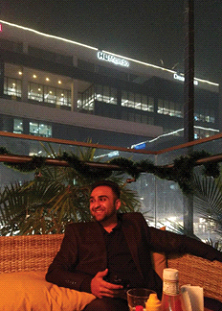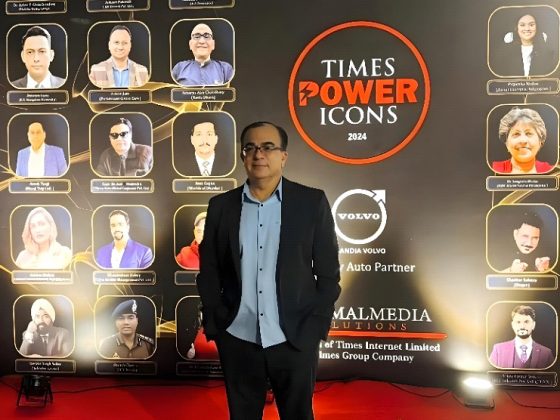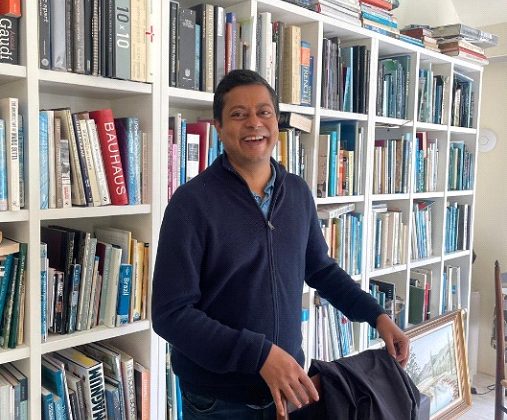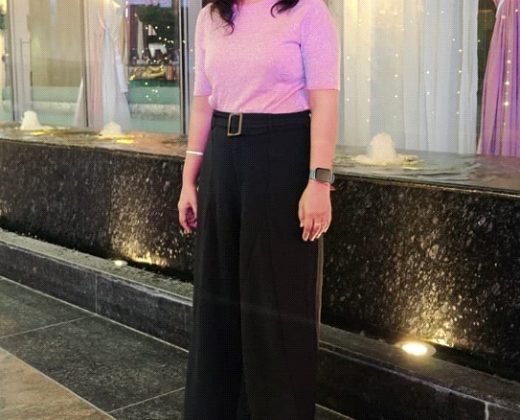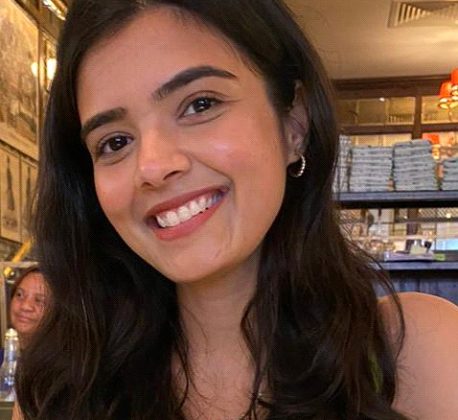From Curiosity To Craft: How Strategy Became Passion – Kahksha Khurana Head Of Strategy Moksha Media Group
“Strategy is not just about solving a problem; it’s about getting into a brand’s headspace and transforming that into something impactful. It’s like playing detective, with a side of creativity and a little bit of chaos.”
When I first dipped my toes into the world of strategy, it came to me when I was searching for something more holistic. And As for the passion- it’s stronger than ever, strategy is pretty much in my bloodstream. It has changed how I used to observe ads, content, and even people sometimes. So, yeah, the passion is very much alive. I have worked with magazines and brands before, but there was a part of me that craved something bigger, more intellectual—and, let’s be real, a bit hectic. I was intrigued by how big ideas come to life, the thought that starts it all. Knee-deep into the role, I understand that strategy is not just about solving a problem for a brand- it’s about getting into their headspace, understanding their DNA, and translating that into something creative and impactful. Like, when I see a campaign, I don’t just see the final ad- I see the observation behind it. What was the insight there? Who are they reaching out to? Did they specifically choose this communication, or are they just winging it?
It’s like playing detective with a side of creativity.
“Navigating Trends Without Losing Brand Identity.”
All brands have a unique narrative direction that sets them apart from their competition, but we live in a day and age where ongoing trends have a huge influence when it comes to the content they are making. We have seen conventional and traditional brands experiment with trends and reels, which was great to witness, but it also narrowed the gap. When every brand jumps on every trend, they risk blending into the generic noise. It’s as if everyone at a party wore the same outfit. Sure, it’s stylish, but you don’t stand out. The key is to take trends and twist them to fit your brand’s core values. You want to align with the times without losing your individuality. So, when we strategise for clients, we make sure their content feels fresh and timely but still unmistakably them. That is what makes your brand unique and creative. On the other hand, it’s also challenging when the brands (usually well established ones) are not open for experimentation. They have guidelines, content buckets and communication they want to stick to. These guidelines are important for consistency, but they can also make digital content feel rigid or predictable. However, as strategists, we view this as an opportunity to find new ways to convey the same narrative. Finding 100 creative ways to tell the same story without losing the essence of what makesthe work fun. It requires constant innovation- this is where the real craft lies. If the content feels fresh and fun- then we’ve nailed it. (If not, we’ll just blame the algorithm)
“Thriving in FMCG: Where Data Meets Creativity”
In today’s tech-driven world, being a strategist means being a brand’s guardian and, most importantly, using data and research to understand the market insights and consumer behaviour. They make or break a concept. A good example can be the Swiggy Genie service, which uses consumer data to personalize its communication. It tracks user preferences and predicts what you might need next – whether it’s food or groceries. They use behavioural data and purchase history to create targeted offers, making you feel like they know you better than your best friend. Strategists need to stay ahead of trends but also (like we discussed before) ensure that their brand’s core message isn’t lost in the noise. Above all, it’s about f inding that sweet spot where creativity meets data, ensuring that campaigns are not just seen but actually make an impact, driving both brand engagement and sales. Because if the campaign isn’t bringing in results, did it even happen?
“E-commerce in FMCG: Personalization Meets Engagement”
The future of E-commerce is tech and the scope is massive. It is the final stage of the product, in which the consumer is close to making a purchase. Brands will harness data to create tailored shopping experiences, making it easier for consumers to find products that match their needs. They have the opportunity to make the process as fun and engaging as possible to close the sale- whether that’s through personalisation, tech integration, or simply keeping things interesting. At the same time, omni-channel strategies will become crucial, with brands ensuring seamless experiences across apps, websites, and even social media. The future is tech, and it’s about making shopping fun and impossible to ignore. Because if you can’t keep it engaging, why bother?
“Data-Driven Decisions for Smarter Strategy.”
Data is definitely the backbone of what we do; it’s our compass. We live in an age where you can know a lot about your audience- and that’s both exhilarating and terrifying. When we dive into strategy, we’re not just guessing; we’re armed with consumer behaviour data, market trends, and platform-specific insights that show us where the specific market is headed and how our target consumer is interacting with brands. It’s incredible how much insight you can get from something as simple as abandoned carts or time spent watching a video. Every click, every search word- it’s like a trail leading us to the perfect plan.
“Standing Out Through Relevance and Connection.”
We all love Brands that just gets people. They don’t just sell products; they create moments. Growing up, we saw Amul cracking jokes on current topics on their billboards, and now Zomato seems to have a sixth sense for tapping into cultural moments. They know exactly what will make you stop scrolling and think, “Yep, that’s so true.” What sets them apart? It’s not just about having a great product (though that helps) but about staying relevant, keeping it real, and making sure you feel something. They make you laugh, make you feel seen, and occasionally convince you to buy a random product you didn’t even know you needed. And all of that happens while you’re just casually scrolling through your phone.
“Embedding Innovation for Future-Ready Strategy.”
Integrating digital transformation into strategic planning is about ditching the outdated playbook and staying ’somewhat’ relevant. It’s using the right tech to make our strategies smarter, faster, and more consumer-friendly. We leverage data like social media insights, engagement metrics, and hashtag trends to figure out what’s actually hitting. For example, if a BTS reel performs better, we know people would rather see the brand looking real (and slightly chaotic) than polished and fake. Or if Instagram polls show that customers prefer one product category over another, we temporarily shift focus to that.
“Tech Trends Redefining FMCG: AI, AR, and Beyond.”
First up, we’ve got AI and machine learning, which is basically the current cool thing for predicting trends and personalising shopping experiences. Then there’s AR, which could totally flip the way we shop- trying on clothes or testing products without leaving your couch. If there’s one thing we know for sure, it’s that the future of FMCG is going to be tech-savvy, personalised, and maybe just a little too good at knowing what you want before you even realise it. “Making sure the content feels relevant while staying true to the brand’s identity. If the content feels fresh- then we’ve nailed it. If not, we’ll just blame the algorithm.”
“Spotting Trends with Data, Insights, and Agility.”
To identify market trends, I use a mix of qualitative and quantitative research- monitoring social media chatter, reading market reports, analyzing consumer data, and yes, scrolling through reels. The quickest way, though, is to check out the competition- the analysis provides key insights into their strategies, products, and positioning, helping us spot gaps and make smarter decisions.
“Balancing Vision with Flexibility for Lasting Impact.”
Long-term planning is all about flexibility. We have to set clear goals but also be prepared to pivot as things change. The key is keeping the brand’s core and narrative intact and not losing sight of that. When in doubt- test and iterate. A quantitative (and popular) example would be A/B testing, which tells you exactly what your audience prefers and that you just have to go in that direction. And finally, a college trick that still works: scenario building. As much as I dreaded it back then, it has proven to be incredibly handy now.


